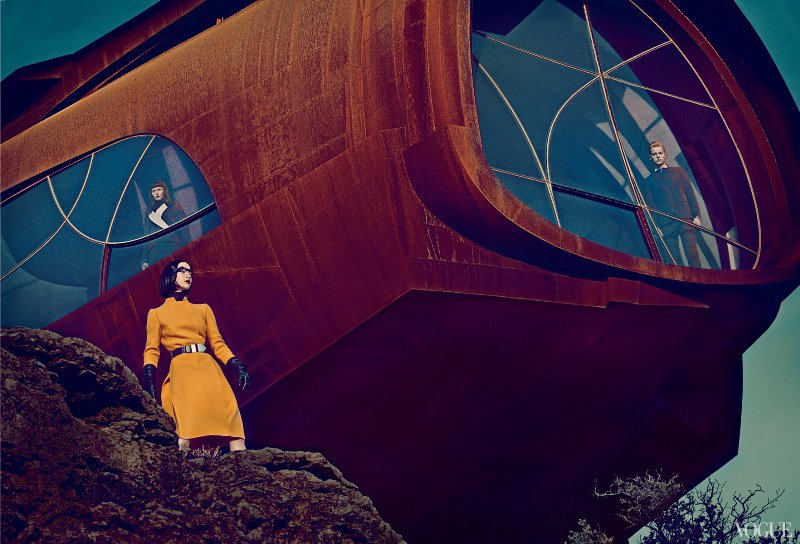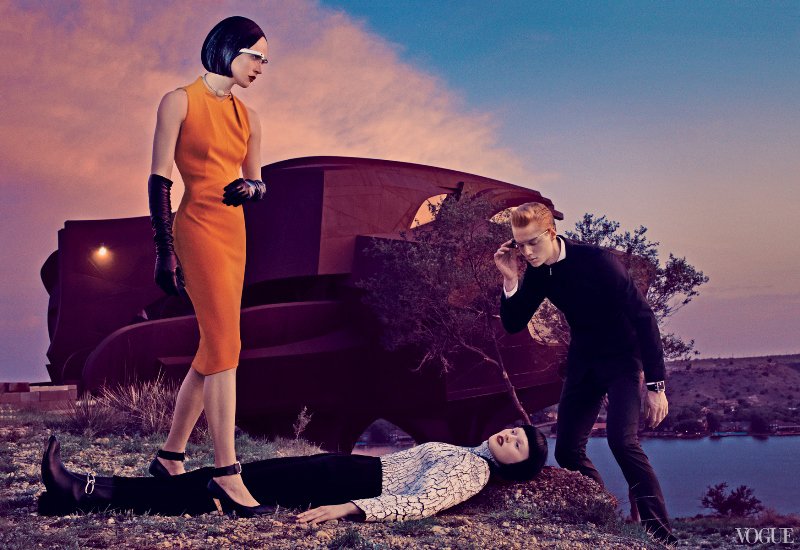Google Glass just scored a 12-page spread in Vogue’s September issue, or what’s easily the most influential issue of the most influential publication in all of fashion. You could argue that this is Google’s moment, that this single spread (coupled with the DVF show last year) portends a future in which we all wear Glass.
And I’ll gladly listen. Just give me a second while I grab my live goat shawl because it’s a bit cold in here. You wouldn’t happen to have any alfalfa in your pocket?
Just because Google is courting the fashion industry doesn’t mean that Glass–in its current hideous incarnation–is the next big fashion accessory. Sergey Brin is to Anna Wintour what Jay Gatsby is to Daisy Buchanan: a nouveau riche geek making attempts at chic. A spectacle.
If you want to know how Vogue really sees Glass, take a closer look at that the mise en scène called “The Final Frontier.” Glass doesn’t live in a world of rolling meadows, crashing waves, Elizabethan furniture, or any other ethereally romantic creation of Grace Coddington. Glass was placed into a dystopian future, some planet from the original Star Trek that’s devoid of life save for a solitary, soul-sucking alien and a model in a Bottega Veneta wool-cashmere coat ($2,750). (Call that coat “saffron,” but any way you gussy up the hue, that’s Captain Kirk’s color through and through.) Even in Vogue’s brashest issue of the year, Glass can only exist as geek-wear.
Yet I understand the magazine’s creative approach. Their photo spread works wonderfully as an artistic statement all its own. The images are hyperbole through environment–Glass just makes sense in a dead sci-fi future in the same way that wool feels inevitable in Scotland. Because when you actually see Glass worn in person, noticing its absolute worst trait–how it has a tendency to obscure the wearer’s eyeline in profile–it’s hard to feel anything but coldness toward the technology.
Is she dead because she removed Glass?
Vogue likes Glass for the wrong reasons: Because it’s expensive and it looks silly, because it makes a brash, unmistakable fulcrum in a photo essay. So in featuring Glass, Vogue has actually given Google the kiss of death, certifying that Glass (v1) will always be a loved or hated fashion statement for an elite few, an elite few who probably like Star Trek.
But with any luck, the next time Mountain View celebrates an appearance in Vogue, no one will notice Isabelle Olsson’s original design. Glass will be invisible, existing as the technology woven deep within the fabric of fashion. And Glass’s greatest fashion statement can be every fashion statement. Glass can be ubiquity.
See the spread here.
Photographs by Steven Klein, Vogue, September 2013


